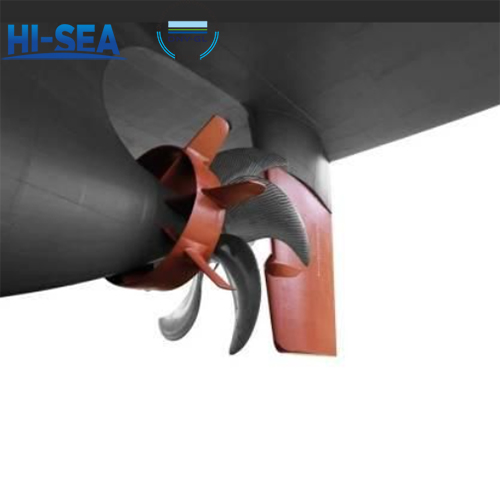
Marine Reaction Rudder
The reactive rudder, bounded by the propeller axis, is twisted into tow sections in the opposite direction to port and starboard, so that it faces the two currents expelled by the propeller. Its distortion skewness is the largest at the propeller shaft, and decreases gradually to the upper and lower ends. When it decreases to a certain position, the blade profile is still symmetrical and streamlined.
The reactive rudder plays the role of a guide vane that increases the axial induced velocity in the wake to improve the propulsion efficiency and increase thrust, which is thought to increase the thrust force by 1 to 3%.
Overview
For high speed and low speed ships, marine reactive rudder can bring more benefits than conventional semi-suspended rudder. It typical applications include container ships, warships, cruise ships, etc. The marine reactive rudder provides additional force, enhancing the turning moment and making steering more effective, especially at lower speeds or when more precise maneuverability is required. It is a specialized type of rudder designed to improve the efficiency and maneuverability of a vessel. Unlike a traditional rudder, which simply turns the flow of water to steer the ship, a reaction rudder uses hydrodynamic principles to enhance steering performance.
Features:
Obvious energy saving effect
Corrosion-resistant
Helpful to increase the speed of ships
High quality and efficiency
Low manufacturing cost: only need to change its profile form without increasing the rudder blade material.





